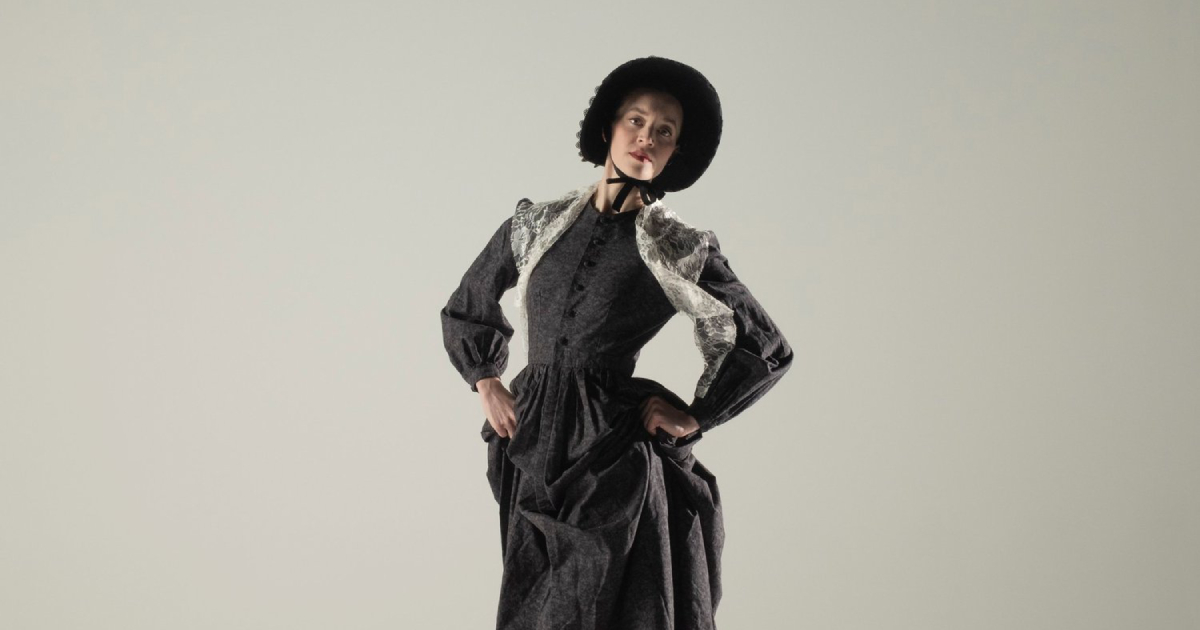Is there anything as romantic as classical ballet? Deos Contemporary Ballet reminds us Victorian literature, born of the same historical period, provides the perfect fodder for a new, brilliantly conceived storybook ballet with “Jane Eyre”, performed this weekend at St. Cecilia Music Center.
Charlotte Brontë’s classic 1847 coming-of-age romance has been adapted well over 100 times, for film, radio, television, and the stage, including musicals, operas, and ballets, as well as literary sequels, re-workings, re-tellings, prequels, and spin-offs, from as early as 1910. The fictional first-person account tells the story of one woman’s overcoming tragic obstacles, from being orphaned, neglected and abused as a child, to losing her best friend, to becoming a governess and falling in love, to having that love ripped from her at the altar, to ultimately seizing love again.
And Deos Ballet brings to life this dramatic telling exquisitely through both movement and language, maximizing the romanticism and lyricism of both the novel and dance with tremendous expressivity.
Movement and text work together in Choreographer and Artistic Director Tess Sinke’s vision, and she makes use of Brontë’s words (script organized by Kathleen Lewis) through a narrator on stage (Martha Bellamy) as well as choreography driven by academic classical ballet movements married with contemporary expressions to communicate both plot and emotion beautifully. The effect heightens a feminist interpretation of the classic tale as it’s thoroughly embodied, both literally and figuratively, primarily through women’s bodies.
And this largely female cast is exquisite and universally talented as both dancers and actors. Leah Haggard is a marvelous Jane Eyre. With long limbs and extraordinary extensions, she’s physically outstanding and also captures both the character’s rich evolution as well as the vast range of emotion in the quality of her movements.
Haggard is paired beautifully with Michael Burke, who is an utterly charming and wonderfully complex Rochester. Their complicated love story develops from its initial tensions to reciprocated rescues to painful forced rejection to abiding love through a series of gorgeous pas de deux. What begins as a kind of confrontational dance off transitions into remarkable grace: dramatic lifts, tremendous backbends that lift hearts to the heavens, and a repeated motif: with her hugging his neck he spins her suspended with her body practically parallel to the ground. The centrifugal force symbolizes the powerful ways the world has conspired to separate them; her arms around him keep them together, their connection stronger than anything that may keep them apart.
This kind of symbolic movement and repeated motifs are a huge part of what makes this ballet adaptation especially pleasing and effectively communicate theme throughout the ballet.
For example, Madison Massara-Leister’s Bertha Mason is tortured. Like a big cat in a cage, she paces and lashes out; barefoot and dressed in red, she bites her arm held parallel to the ground then slaps it away with her other hand. Her pas de deux with Haggard are stunning; at times they mirror one another, in deep plié and wide second they roll their heads and reach for the floor, a moving image that represents confusion and grief. They also dance together with a wedding veil Massara-Leister wraps around her neck like a noose and then rips apart. The symbolism is perfectly dramatic.
This enormous story full of big emotions is told with just a cast of 12, though Sinke’s choreography creates small but mighty corps de ballet numbers reminiscent of 19th Century choreographer Marius Petipa’s works, another homage to the romantic period. The corps is universally powerful with standout performances from Isabelle Ramey as both Helen Burns and Blanche Ingram, two very different and distinct characters who shape Jane Eyre’s trajectory.
The technical elements in this show are also strong, allowing the dancing to take center stage while also making the story perfectly accessible. Dave Johnson’s lights in conjunction with David Olgers’ sound create clear transitions and shifts in plot as well as emotion, from red lights in conjunction with the sound of a blaze for the destructive fires, to dim lights and the tick tock of a clock to show anticipation, time and space as well as emotion are shaped.
And Grace Sinke’s elegant, uncomplicated, period costumes move beautifully and help establish character in subtle ways. For example, Haggard’s costume changes take place on stage to show her transition from girl to governess to lover to wife and she begins as a child in black booties but ultimately graduates to pointe shoes by the end of the show to show how she becomes a self-realized woman in command of her life and choices.
Indeed, Deos Contemporary Ballet’s “Jane Eyre” itself is a self realized adaptation that makes good on the promise of the possibilities of both dance and literature as expressive and deeply feminist art forms. What is classic is made new again beautifully.
Jane Eyre
Deos Contemporary Ballet
Oct. 18-20
deosballet.com





